In our modern society, some individuals are brave, take extraordinary risks, and face perilous circumstances daily in pursuing their professions. These individuals take on some of the most dangerous jobs in the world, confronting hazards that many of us can hardly imagine. From working in extreme environments to facing life-threatening situations, these individuals showcase immense courage and dedication in their chosen fields.
In this blog, we delve into the realm of occupational danger and highlight the top 15 most dangerous jobs in the world. We explore the risks and challenges that accompany each occupation, shedding light on the critical nature of their work and the sacrifices these individuals make for the betterment of our society.
From the depths of the sea to the heights of construction sites, from the intense battlegrounds of law enforcement to the unpredictable world of stunt performers, we navigate these perilous professions, unveiling the inherent risks they face. We examine the dangers of handling heavy machinery, working at great heights, or being exposed to hazardous materials. We discuss the physical and mental strains endured by individuals in these occupations and the importance of safety measures in mitigating risks.
Through this exploration, we aim to raise awareness about the challenges faced by those who take on these perilous jobs. We acknowledge their sacrifices to keep our communities safe, construct the buildings that shape our skylines, and entertain us with awe-inspiring performances. We also acknowledge the need for improved safety standards, better training, and enhanced support for these individuals who put their lives on the line daily.
15 Most Dangerous Jobs In The World
The world of work is diverse and fascinating, with careers spanning an array of fields, from the arts and sciences to technology, education, and beyond. However, some jobs have inherent risks, exposing workers to high danger levels. Here are the top 15 most dangerous jobs in the world, based on factors such as injury rates, fatality rates, and overall risk.
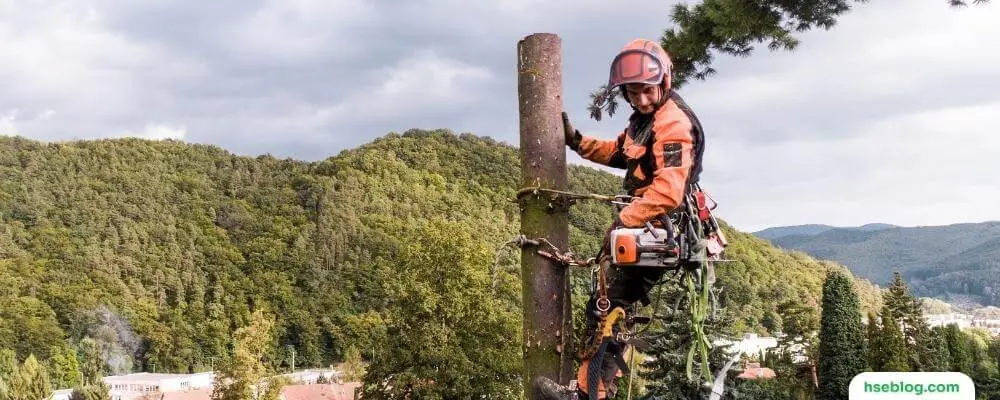
1. Logging Workers
Logging is universally recognized as one of the most dangerous jobs in the world. It involves cutting down trees from forests to turn them into logs, a primary resource in several industries such as construction, paper production, and more.
- Heavy Machinery and Equipment: Logging workers regularly use heavy machinery like chainsaws and large logging machines, which are inherently risky. These powerful tools can cause severe injuries if not handled correctly. Additionally, loggers use machinery to cut and move trees, presenting the risk of crushing or pinning injuries.
- Remote Locations: Loggers often work in isolated, remote areas far from medical facilities. This remoteness can delay the arrival of emergency medical services in the event of an accident, exacerbating injuries and increasing the likelihood of fatalities.
- Falling Trees: The risk of falling trees is a constant hazard in this profession. Even with careful planning and execution, a tree can fall in an unexpected direction, potentially causing serious injury or death. In addition, “widowmakers” – dead branches that can fall without warning – are a common hazard in the logging industry.
- Fatigue: Logging requires immense physical strength and endurance, and the long hours contribute to worker fatigue. Exhaustion can slow reaction times and lead to mistakes, increasing the likelihood of accidents.
- Harsh Weather Conditions: Loggers often work in adverse weather conditions, such as heavy rain, snow, and high winds, which can make the work environment slippery and unstable, adding to the risk of falls and equipment mishaps. Extreme temperatures, both hot and cold, can also put strain on workers’ bodies, leading to fatigue, dehydration, hypothermia, or heatstroke.
- Noise and Vibration: Chronic exposure to loud noise from chainsaws and other equipment can lead to hearing loss over time. Regular exposure to vibration from machinery can also contribute to hand-arm vibration syndrome, a condition that affects the blood vessels, nerves, and joints of the hands, wrists, and arms.
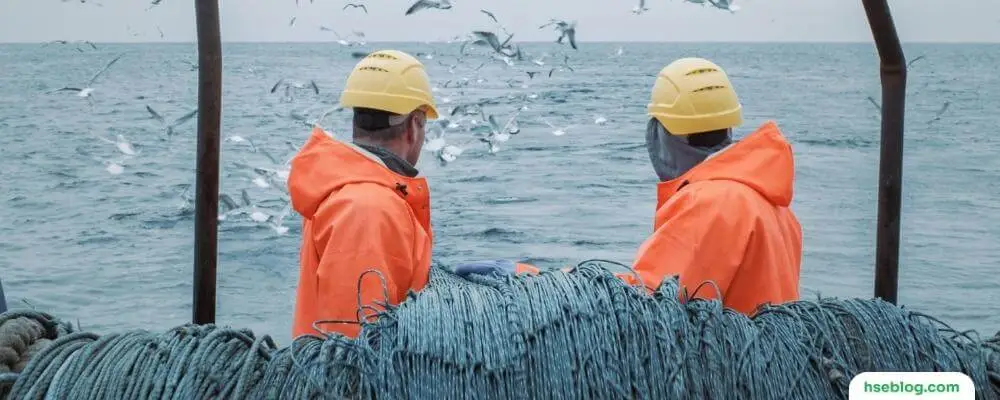
2. Commercial Fishermen
Commercial fishing is considered one of the most dangerous occupations in the world. Fishermen are constantly exposed to an unpredictable and often hostile work environment: the open sea. The job demands physical stamina, resilience, and a keen understanding of the ocean.
- Hazardous Conditions: Commercial fishermen face variable and often severe weather conditions. Storms can form quickly, creating high waves and gusty winds that can capsize boats or wash crew members overboard. Cold temperatures, especially in regions like the North Atlantic or Alaskan waters, can lead to hypothermia and frostbite.
- Heavy Equipment: Commercial fishing involves the use of heavy, complicated equipment. Nets, winches, and other gear can cause injury if incorrectly handled. Cages can weigh hundreds of pounds in certain types of fishing, such as crabbing, presenting additional risk.
- Risk of Drowning: The constant proximity to the ocean surface implies an inherent risk of drowning. Crew members can be swept overboard by large waves, and in cold waters, hypothermia can set in quickly, increasing the risk of drowning. Experienced swimmers can struggle in rough seas or become tangled in fishing gear, leading to fatal outcomes.
- Long Hours and Fatigue: The workdays in commercial fishing can be extremely long, especially during peak seasons. Fatigue from extended periods of physical labor can lead to a lack of concentration, increasing the chance of accidents.
- Isolation: Like logging workers, commercial fishermen often work in remote locations. If an injury occurs, immediate medical attention can be hours or even days away, turning minor injuries into serious, life-threatening situations.
- Sleep Deprivation and Irregular Schedules: Fishermen often work irregularly, disrupting normal sleep patterns. Sleep deprivation can result in impaired decision-making and slower reaction times, contributing to the risk of accidents.
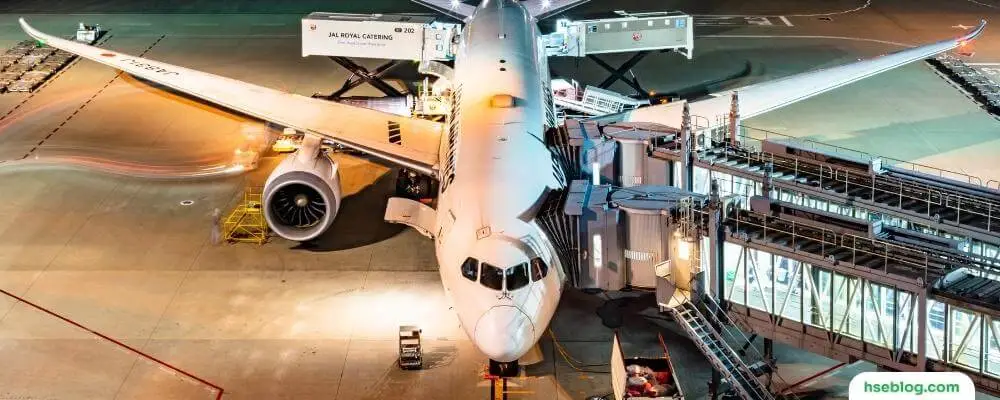
3. Aircraft Pilots and Flight Engineers
Aircraft pilots and flight engineers are responsible for the safe and efficient operation of aircraft, including commercial airliners, cargo planes, and helicopters. While aviation technology has advanced significantly over the years, reducing the risk associated with flying, this occupation still carries inherent dangers.
- Mechanical Failures: Aircraft are complex machines with thousands of moving parts and components. Despite rigorous maintenance schedules and pre-flight checks, mechanical failures can still occur. Engine malfunctions, hydraulic system failures, or issues with landing gear can all present serious risks to the aircraft and its occupants.
- Inclement Weather: Pilots and flight engineers must contend with weather conditions that can impact flight safety. Thunderstorms, turbulence, icing, and low visibility due to fog or clouds can all present challenges. While modern aircraft have advanced weather radar and anti-icing systems, severe weather can still cause accidents or force pilots to make emergency landings.
- Human Error: As with any occupation, human error can play a role in aviation accidents. Miscommunication between pilots and air traffic control, fuel or weight miscalculations, or reading instrument mistakes can all contribute to incidents. Fatigue can also be a factor, as pilots often work long hours and may experience disrupted sleep patterns due to irregular schedules or time zone changes.
- High-Pressure Environment: Pilots and flight engineers must make critical decisions under pressure, often with limited time and information. This high-stress environment can contribute to errors in judgment, which may have serious consequences.
- Training and Regulation: To mitigate these risks, pilots and flight engineers undergo extensive training and must meet strict licensing requirements. Regulatory agencies, such as the Federal Aviation Administration (FAA) in the United States, enforce safety standards and regularly update rules and procedures to improve aviation safety.

4. Roofers
Roofing is a profession that involves the construction and repair of roofs, a critical component of any building. Despite being essential, it is a job riddled with risks, primarily because of the heights involved and the exposure to extreme weather.
- Working at Heights: Roofers are required to work at considerable heights, which increases the potential for severe injury or even death in case of a fall. The risk is further amplified when they work on steeply pitched roofs, where maintaining balance can be challenging. Even with safety gear such as harnesses, the danger persists.
- Extreme Weather Conditions: Roofers often have to work in various weather conditions. In hot weather, they risk heatstroke and dehydration. In cold, icy, or rainy conditions, the roof’s surface can become slippery, increasing the risk of falls. Balance can be affected in windy conditions, and loose materials can turn into hazardous projectiles.
- Physical Strain: The job is physically demanding, requiring heavy lifting, bending, and kneeling, which can lead to musculoskeletal injuries. Chronic exposure to these physical demands can lead to long-term health issues like back problems.
- Hazardous Materials: Roofers often deal with hazardous materials. For instance, older buildings may have asbestos-containing roofing materials, exposure to which can lead to severe health issues such as mesothelioma. They also use hot bitumen, a common roofing material, which can cause severe burns.
- Tool-Related Injuries: Roofing involves using various tools, including nail guns, knives, and power saws. Improper use or accidental slips can result in severe injuries.
- Electrocution: There’s also a risk of electrocution if workers come into contact with overhead power lines or if electrical wiring in a building is incorrectly handled.
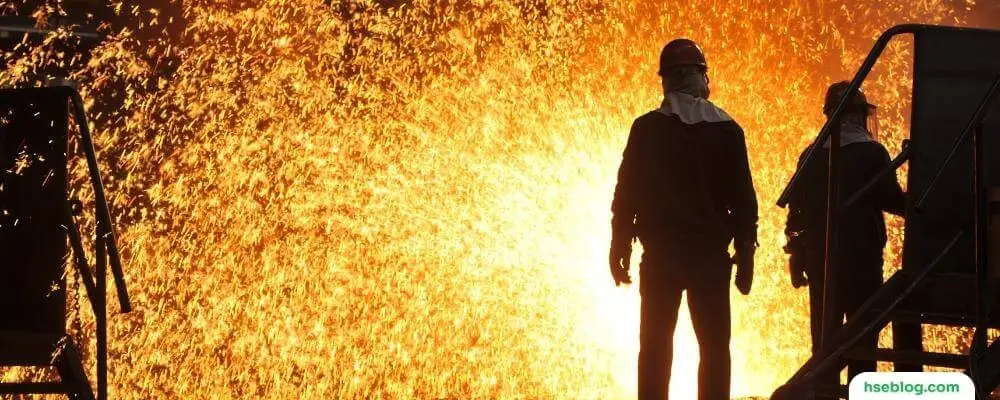
5. Structural Iron and Steel Workers
Structural iron and steel workers play a crucial role in the construction industry by assembling and installing the skeletal framework of buildings, bridges, and other structures. However, this occupation comes with significant risks due to the nature of the work and the environment in which it takes place.
- Working at Heights: One of the primary hazards structural iron and steel workers face is working at great heights. They often find themselves high above the ground on scaffolding, cranes, or elevated platforms. This height poses a constant risk of falls, which can result in severe injuries or fatalities. Proper safety measures, such as harnesses, guardrails, and safety nets, are essential for mitigating these risks.
- Falling Objects: Structural iron and steel workers are exposed to the danger of being struck by falling objects. As they work above ground, tools, equipment, or construction materials can accidentally slip or be dropped, potentially causing severe injuries. Wearing appropriate personal protective equipment, such as hard hats and steel-toed boots, is vital to minimize the impact of falling objects.
- Heavy Material Handling: Iron and steel components used in construction projects can be extremely heavy. Lifting, carrying, and positioning these materials require physical strength and coordination. Improper handling techniques can result in musculoskeletal injuries, including strains, sprains, or fractures. Adhering to proper lifting and carrying techniques, mechanical lifting aids, and team collaboration are essential to reduce the risk of injuries.
- Structural Instability: During construction, the structure may not be entirely stable until it reaches a certain completion stage. This instability can create precarious working conditions and increase the risk of collapse or partial failure. Following engineering plans, proper bracing, and adhering to safety protocols are crucial for maintaining stability and minimizing the risk of accidents.
- Weather Conditions: Structural iron and steel workers often work outdoors, exposing them to various weather conditions. Extreme temperatures, strong winds, rain, or snow can create additional hazards. Slippery surfaces, reduced visibility, and unstable footing can increase the risk of falls and accidents. Proper protective clothing, including clothing suitable for weather conditions, is essential to mitigate these risks.
- Safety Training and Equipment: Structural iron and steel workers should receive thorough safety training to understand potential hazards and best risk mitigation practices. Employers should provide them with appropriate safety equipment, such as fall protection systems, helmets, gloves, and safety glasses, to ensure their well-being on the job.
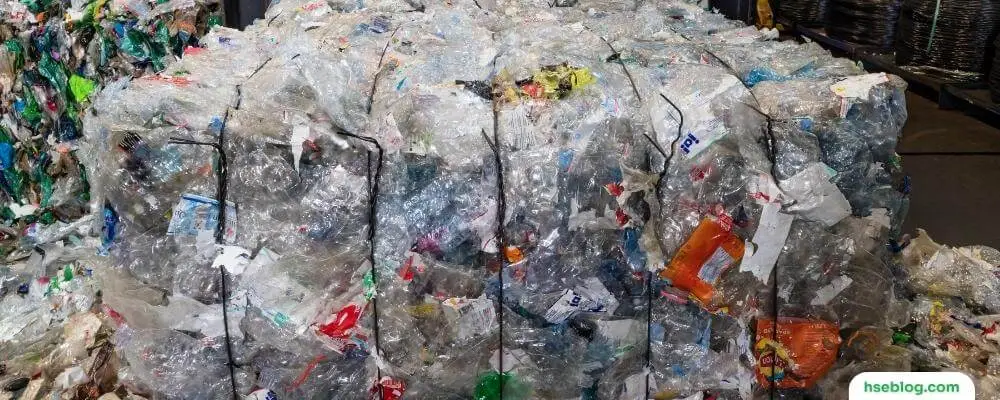
6. Refuse and Recyclable Material Collectors
Refuse and recyclable material collectors, commonly known as garbage collectors or trash collectors, are responsible for collecting and disposing of waste and recyclable materials. While their work is essential for maintaining cleanliness and sanitation in communities, it is also a profession associated with significant risks and challenges.
- Traffic Accidents: One of the primary risks faced by refuse and recyclable material collectors is the danger of traffic accidents. They often work alongside busy roads and streets, navigating their collection vehicles, loading and unloading waste containers, and interacting with traffic. The presence of distracted drivers, reckless motorists, and the need to frequently enter and exit the truck increases the risk of being struck by passing vehicles.
- Exposure to Hazardous Materials: Garbage collectors regularly encounter various hazardous materials while performing their duties. These materials include sharp objects, broken glass, toxic substances, chemicals, or medical waste. Improper handling or accidental contact with these materials can result in injuries, cuts, punctures, or exposure to harmful substances.
- Heavy Lifting and Musculoskeletal Strain: Collectors frequently use manual labor, lifting and emptying heavy bins or containers into their trucks. Repetitive lifting, bending, and twisting can lead to musculoskeletal strains, sprains, and other injuries. The physical demands of the job, combined with the fast-paced nature of collection routes, contribute to these risks.
- Weather-Related Hazards: Refuse and recyclable material collectors must work outdoors, exposing them to various weather conditions. Extreme temperatures, rain, snow, or icy conditions can create additional hazards. Slippery surfaces, reduced visibility, and adverse weather elements increase the risk of accidents, falls, and injuries.
- Workplace Violence: Unfortunately, garbage collectors can also face the risk of encountering aggressive or violent individuals during their routes. This can result from altercations, disputes over disposal issues, or encounters with individuals experiencing mental health crises. Training in conflict resolution and personal safety techniques is crucial in mitigating this risk.
- Safety Training and Protective Equipment: Employers should provide comprehensive safety training to garbage collectors to educate them about potential hazards, safe handling practices, and proper use of protective equipment. This includes providing personal protective equipment such as high-visibility clothing, gloves, safety shoes, and eye protection.
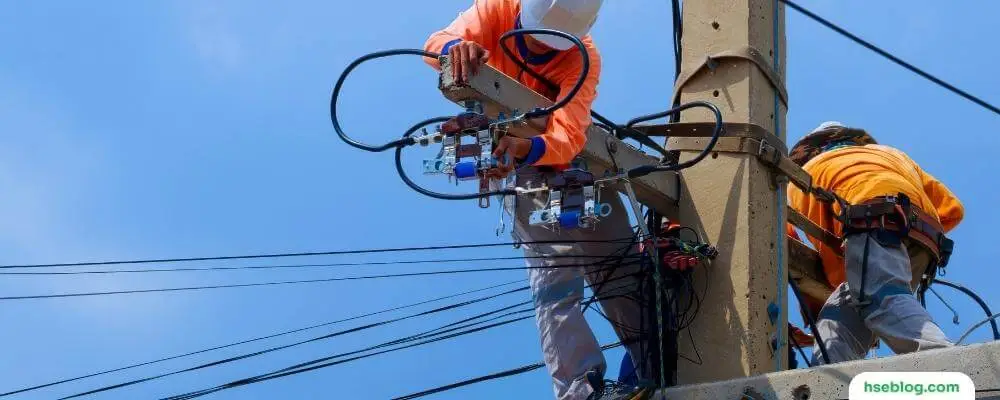
7. Electrical Power-Line Installers and Repairers
Electrical power-line installers and repairers, also known as lineworkers or linemen, are responsible for installing, repairing, and maintaining electrical power systems, including high-voltage power lines and transmission equipment. Their work involves inherent dangers due to the nature of the electrical systems they handle.
- Electrocution: Lineworkers face a constant risk of electrocution, which can result in severe injury or death. Working with high-voltage power lines carries the potential for contact with live electrical currents. Accidental contact, equipment malfunctions, or failure to follow proper safety procedures can lead to electric shock incidents. Proper training, adherence to safety protocols, and insulated tools and personal protective equipment are essential for mitigating this risk.
- Falls: Lineworkers work at elevated heights, such as on utility poles, transmission towers, or aerial buckets. The risk of falls from these heights is significant. Factors such as slippery or unstable surfaces, windy conditions, or inadequate fall protection systems can contribute to accidents. Proper use of fall protection equipment, including harnesses and safety lanyards, along with regular equipment inspection and maintenance, is critical for preventing falls.
- Injuries Related to High-Voltage Power Lines: High-voltage power lines pose additional hazards to lineworkers. If not handled correctly, they can cause severe burns, electrical arcs, or flashovers. Lineworkers must exercise extreme caution when working near energized lines, ensuring proper grounding, isolation, and lockout/tagout procedures are followed. Regular training and understanding of electrical systems and their associated risks are vital.
- Adverse Weather Conditions: Lineworkers are often required to work in various weather conditions, including extreme heat, cold, rain, or snow. These conditions can affect their ability to work safely and increase the risk of accidents. Slippery surfaces, reduced visibility, or high winds can compromise balance, grip, and safety. Adequate protective clothing, such as insulated gear, rain gear, and appropriate footwear, is essential for mitigating weather-related risks.
- Equipment and Structural Hazards: Lineworkers use specialized tools and heavy equipment and climb structures such as poles and towers. Mishandling or equipment failure can result in injuries. Falling objects, malfunctioning equipment, or structural collapses pose additional risks. Regular equipment inspection, maintenance, and adherence to safety procedures are critical to reducing these hazards.
- Emergency Situations: Lineworkers may face emergencies, such as restoring power during storms, natural disasters, or other unforeseen events. These situations can involve added risks, including working under time pressure, challenging environmental conditions, or encountering unpredictable electrical situations.
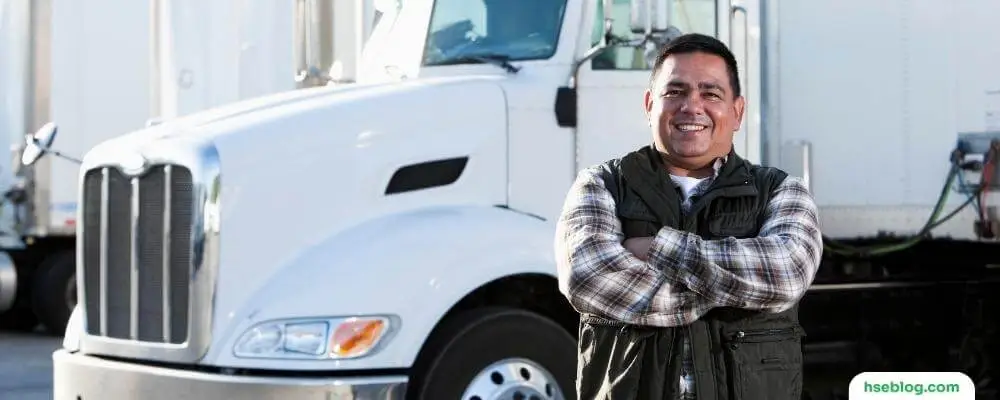
8. Truck Drivers and Mobile Sales Workers
Truck drivers and mobile sales workers play a critical role in transportation and commerce, but their profession comes with a unique set of risks and challenges due to the nature of their work and the environments they operate in.
- Accidents and Fatigue: Long hours on the road can lead to driver fatigue, significantly increasing the risk of accidents. Operating large commercial vehicles for extended periods can be physically and mentally demanding. Fatigue impairs reaction times, decreases attentiveness, and affects decision-making abilities. Strict adherence to driving regulations, including mandated rest breaks and proper rest management, is crucial in mitigating the risk of fatigue-related accidents.
- Poor Weather Conditions: Truck drivers and mobile sales workers encounter various weather conditions. Adverse weather, such as heavy rain, snow, ice, or fog, can reduce visibility and create hazardous driving conditions. Slippery roads, reduced traction, and limited maneuverability increase the risk of accidents. Monitoring weather forecasts, adjusting driving behavior to the conditions, and maintaining a safe following distance are essential precautions.
- Highway Crime: Truck drivers are sometimes vulnerable to highway crime, including theft, hijacking, or assault. Rest areas or truck stops can be targets for criminal activities. Maintaining situational awareness, parking in well-lit areas, and securing the vehicle and cargo can help reduce the risk of becoming a victim of highway crime.
- Physical Health and Sedentary Lifestyle: The nature of the job often involves sitting for prolonged periods, leading to a sedentary lifestyle. Lack of physical activity, poor nutrition, and irregular sleep patterns can contribute to various health issues, such as obesity, cardiovascular problems, and musculoskeletal disorders. Healthy habits, including regular exercise, a balanced diet, and sufficient rest, can help mitigate these risks.
- Traffic and Road Conditions: Truck drivers encounter various traffic situations and road conditions. Congested traffic, aggressive drivers, and distracted motorists pose risks on the road. Uneven or poorly maintained road surfaces, construction zones, and narrow or winding roads can also increase the likelihood of accidents. Staying alert, following traffic laws, and adjusting driving techniques to road conditions are essential for minimizing risks.
- Driver Distractions: Distractions, such as cell phone use, eating while driving, or multitasking, can divert a driver’s attention and increase the risk of accidents. Truck drivers should prioritize safe driving practices, avoid distractions, and focus on the task.

9. Farmers, Ranchers, and Agricultural Workers
Farmers, ranchers, and agricultural workers play a vital role in food production and the maintenance of rural economies. However, their profession comes with inherent risks and challenges due to the nature of their work and the environments in which they operate.
- Heavy Machinery: Agricultural work often involves the operation of heavy machinery, such as tractors, combines, and harvesters. These machines can pose significant risks, including rollovers, entanglements, or being struck by moving parts. Inadequate training, lack of maintenance, or unsafe use of machinery can lead to accidents and injuries. Following proper safety protocols, regular maintenance checks, and providing comprehensive training on equipment operation are critical for mitigating these risks.
- Large Animals: Farmers and ranchers often work with large livestock, such as cows, horses, or pigs. Handling these animals can be unpredictable and pose risks such as kicks, bites, or crushing injuries. Proper animal handling techniques, including using appropriate restraints, maintaining secure enclosures, and understanding animal behavior, are essential for reducing the risk of injuries.
- Exposure to Extreme Weather Conditions: Agricultural work is highly dependent on weather conditions, and workers are often exposed to extreme temperatures, intense sunlight, high humidity, or severe weather events. Prolonged extreme heat or cold exposure can lead to heatstroke, hypothermia, or frostbite. Sunburn, dehydration, and heat exhaustion are also common risks. Wearing appropriate protective clothing, staying hydrated, and taking regular breaks in shaded areas are crucial for mitigating the impact of extreme weather conditions.
- Chemical Exposure: Agricultural workers often work with fertilizers, pesticides, herbicides, and other chemicals. Exposure to these substances can result in acute or chronic health effects, including skin irritations, respiratory problems, or long-term illnesses. Proper handling, storage, and use of chemicals, along with personal protective equipment, such as gloves and masks, are vital for reducing the risk of chemical exposure.
- Musculoskeletal Strain: The physical demands of agricultural work, such as lifting heavy objects, repetitive motions, and prolonged bending or kneeling, can lead to musculoskeletal injuries. Back pain, strains, sprains, and joint problems are common among agricultural workers. Proper lifting techniques, using assistive devices when necessary, and incorporating regular stretching and exercise routines can help reduce the risk of musculoskeletal injuries.
- Machinery Accidents: In addition to heavy machinery, agricultural workers may also use power tools, sharp implements, or other equipment that can cause injuries if not used properly. Safe operation, adequate training, and personal protective equipment are crucial for preventing accidents.
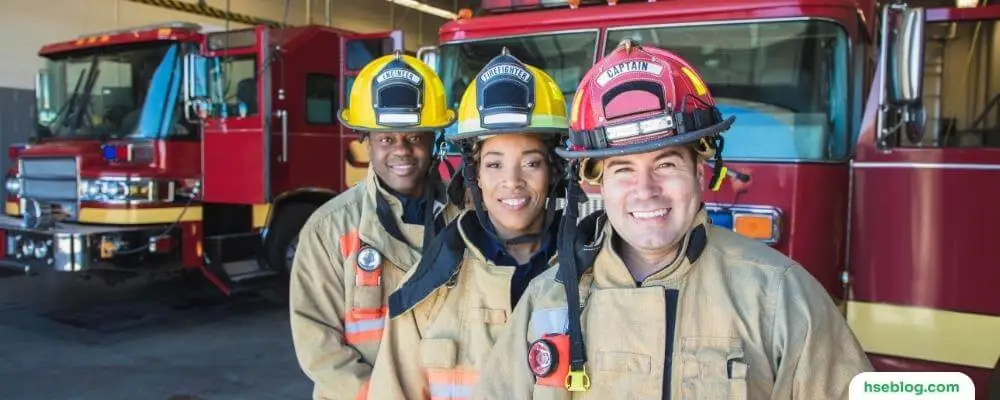
10. Firefighters
Firefighters are courageous individuals who put their lives on the line to protect lives, property, and communities from fires and other emergencies. Their profession involves facing numerous risks and challenges, demonstrating incredible bravery and resilience.
- Exposure to Flames: Firefighters directly confront intense heat and flames during firefighting operations. This puts them at risk of thermal burns, which can cause severe injuries or even be life-threatening. Extreme temperatures can also lead to heat exhaustion or heatstroke. Protective gear, including flame-resistant clothing, helmets, gloves, and boots, is essential in minimizing the risk of burns.
- Smoke Inhalation and Toxic Gases: Firefighters are exposed to smoke and toxic gases produced by burning materials. Inhaling smoke can cause respiratory distress, lung damage, or carbon monoxide poisoning. Properly fitted respirators, self-contained breathing apparatus (SCBA), and continuous training on respiratory protection equipment are critical for reducing the risk of smoke inhalation.
- Structural Hazards: Firefighters frequently operate in hazardous environments, including structurally compromised buildings. Collapsing floors, walls, or roofs pose a significant danger. Rapid structural assessments, effective communication with incident commanders, and adherence to established safety protocols help minimize the risk of structural collapse.
- Physical Strain and Injuries: Firefighting is physically demanding work that requires strength, agility, and endurance. Carrying heavy equipment, climbing ladders, and navigating through smoke-filled environments can result in strains, sprains, or musculoskeletal injuries. Regular physical fitness training, proper lifting techniques, and maintaining a healthy lifestyle contribute to reducing the risk of injuries.
- Emotional and Psychological Stress: Firefighters frequently encounter traumatic situations, witnessing severe injuries, loss of life, and property destruction. The emotional toll of these experiences can lead to post-traumatic stress disorder (PTSD), anxiety, or depression. Mental health support, critical incident stress management programs, and access to counseling services are crucial in addressing and managing the emotional stressors firefighters face.
- Chemical and Hazardous Material Exposure: Firefighters may encounter hazardous materials, such as flammable liquids, toxic substances, or explosive materials, during emergencies. Proper training in hazardous material response, knowledge of safety data sheets, and appropriate personal protective equipment usage are essential for minimizing the risks associated with chemical exposures.

11. Police and Patrol Officers
Police and patrol officers play a critical role in maintaining law and order, protecting communities, and ensuring public safety. However, their profession exposes them to various risks and challenges as they carry out their duties.
- Violent Crime: Police officers regularly confront situations involving violent criminals or individuals engaged in criminal activities. They face the risk of physical assault, including being attacked with weapons or exposed to dangerous individuals under the influence of drugs or alcohol. These confrontations can result in serious injuries or even loss of life.
- High-Speed Pursuits: Engaging in high-speed pursuits to apprehend suspects or respond to emergencies presents a significant risk to officers and the public. Pursuits involve fast-moving vehicles, often in densely populated areas, which can lead to accidents, injuries, or fatalities. Balancing the need to apprehend suspects with the safety of officers, bystanders, and other motorists is a constant challenge.
- Dealing with Individuals in Crisis: Police officers frequently encounter individuals experiencing mental health crises, emotional distress, or other personal crises. These situations require officers to use their judgment, communication skills, and de-escalation techniques to manage potentially volatile situations. The unpredictability and volatility of such encounters increase the risk of violence or harm to officers and those involved.
- Use of Force: Police officers may be required to use force to protect themselves and others or maintain public safety. However, the use of force carries inherent risks and legal implications. Officers must balance the need to uphold the law with ensuring the safety and well-being of all individuals involved while also adhering to departmental policies and legal standards.
- Emotional and Psychological Impact: The demands of law enforcement work can take a toll on officers’ mental and emotional well-being. Exposure to traumatic events, stress, and prolonged exposure to difficult situations can lead to psychological issues such as post-traumatic stress disorder (PTSD), anxiety, depression, or burnout. Departments must provide resources for mental health support, counseling, and critical incident stress management to address these challenges.
- Firearms and Weapons: Carrying firearms and other weapons is a necessary part of law enforcement duties. However, it increases the risk of accidents, unintentional discharges, or encounters where the officer’s weapon may be used against them. Rigorous training, adherence to safety protocols, and ongoing proficiency assessments are critical for minimizing firearm-related risks.
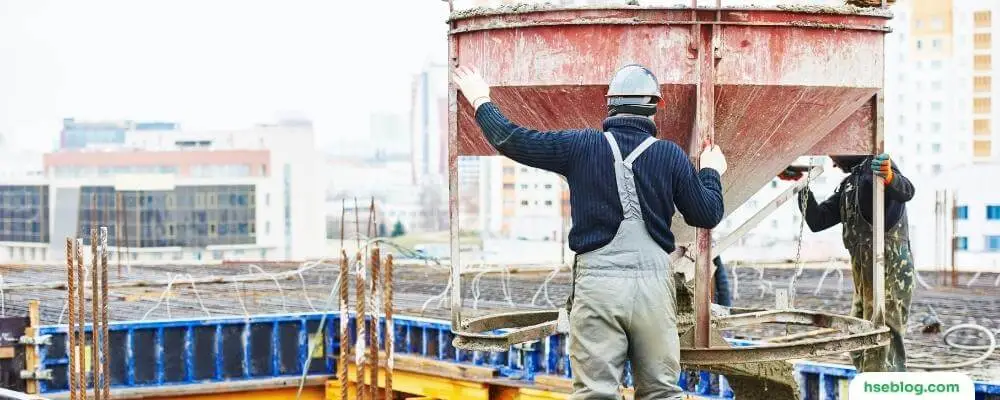
12. Construction Laborers
Construction laborers play a crucial role in building our infrastructure and structures. However, their occupation involves working in an environment filled with potential hazards and risks. From heavy machinery and power tools to working at heights and dealing with hazardous materials, construction sites require diligent safety practices to protect the well-being of laborers.
- Heavy Machinery and Equipment: Construction sites often feature a variety of heavy machinery and equipment, including excavators, cranes, bulldozers, and forklifts. Improper use or operation of these machines can lead to accidents, such as being struck by moving parts, caught in machinery, or crushed by heavy loads. Rigorous training, proper equipment maintenance, and adherence to safety protocols are crucial for minimizing the risk of accidents involving heavy machinery.
- Power Tools and Handheld Equipment: Construction laborers frequently use power tools such as drills, saws, nail guns, and jackhammers. These tools can cause severe injuries, including lacerations, fractures, or amputations if not used correctly. Employing personal protective equipment (PPE), providing comprehensive training on tool usage, and ensuring equipment maintenance is essential for minimizing the risks associated with power tools.
- Working at Heights: Construction often involves working at elevated heights, such as scaffolding, ladders, or rooftops. Falls from heights are a significant risk and can lead to severe injuries or fatalities. Properly erected and maintained scaffolding, fall protection systems, guardrails, and adherence to safety guidelines are crucial for preventing falls and ensuring the safety of workers at heights.
- Hazardous Materials: Construction sites may contain hazardous materials, including asbestos, lead-based paint, chemicals, or toxic substances. Exposure to these materials can lead to various health issues, such as respiratory problems, skin irritation, or long-term illnesses. Employers must provide appropriate training, information about hazardous materials present on-site, and the necessary personal protective equipment to mitigate the risks associated with these materials.
- Confined Spaces: Construction laborers may work in confined spaces such as trenches, tunnels, or crawl spaces. These environments pose risks such as suffocation, exposure to toxic gases, or cave-ins. Proper training on confined space entry, monitoring atmospheric conditions, and implementing safety measures are essential to minimize the risks associated with working in confined spaces.
- Weather Conditions: Construction work often occurs outdoors, exposing laborers to various weather conditions. Extreme temperatures, high winds, rain, or snow can create additional hazards. Heat-related illnesses, frostbite, or slippery surfaces due to rain or snow increase the risk of accidents and injuries. Appropriate protective clothing, regular breaks in extreme weather, and adjustments to work practices are necessary to mitigate the risks associated with weather conditions.
- Communication and Coordination: Construction sites involve multiple trades and workers from various disciplines. Effective communication, coordination, and clear delineation of responsibilities are critical to preventing accidents and ensuring the safety of all workers. Regular safety meetings, hazard identification, and adherence to safety plans help create a safety culture on construction sites.

13. Deep Sea Divers
Deep sea diving is a specialized profession that involves underwater exploration, construction, maintenance, and various other tasks in challenging aquatic environments. While it is an exciting and important occupation, deep sea divers face unique risks and dangers associated with their work.
- Decompression Sickness: One of the most well-known risks for deep sea divers is decompression sickness, commonly called “the bends.” This occurs when divers ascend too quickly after spending time at significant depths. The rapid reduction in pressure can cause nitrogen bubbles to form in the bloodstream, leading to various symptoms, including joint pain, fatigue, dizziness, and in severe cases, neurological or cardiovascular issues. Proper adherence to decompression schedules and employing dive tables or dive computers are critical for managing the risk of decompression sickness.
- Drowning: Drowning is a constant concern for deep sea divers. The environment in which they work is inherently hostile to human respiration. Equipment failures, entanglement in cables or ropes, strong currents, or disorientation can lead to critical situations. Extensive training in emergency procedures, proper equipment maintenance, and working in buddy systems are crucial for preventing drowning incidents.
- Hazardous Marine Life: Deep sea divers may encounter hazardous marine life, including venomous or aggressive creatures. This can include venomous fish, jellyfish, or predatory marine animals. Accidental contact or provocation can result in painful stings, bites, or envenomation. Education about local marine life, proper training on avoiding or handling encounters with hazardous marine species, and using protective diving suits can help mitigate these risks.
- Equipment Malfunction: Deep sea divers rely on specialized equipment, including diving suits, breathing apparatus, and communication devices. Equipment failures, such as malfunctioning regulators or diving suits, can lead to life-threatening situations. Regular inspection, maintenance, and adherence to safety procedures are essential for minimizing equipment-related risks.
- Extreme Environmental Conditions: Deep sea divers work in extreme environments, including deep water, strong currents, and sometimes harsh weather conditions. Cold temperatures, limited visibility, strong underwater currents, or the potential for storms can increase the risk of accidents and complications. Proper training, appropriate protective gear, and monitoring weather and environmental conditions are crucial for minimizing the risks associated with extreme environments.
- Psychological and Emotional Strain: The nature of deep sea diving work can be mentally and emotionally demanding. Isolation, working in remote locations, and the potential for high-stress situations can lead to psychological strain and anxiety. Divers must undergo psychological assessments, receive proper training in stress management, and have access to support services to address these challenges.
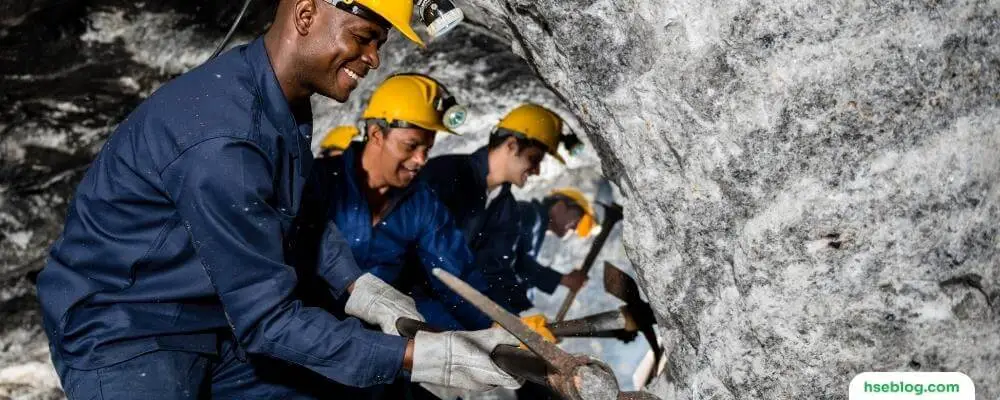
14. Miners
Miners work in a challenging and hazardous environment, extracting valuable minerals and resources from beneath the Earth’s surface. Their occupation entails significant risks and requires strict adherence to safety measures. From cave-ins and gas explosions to long-term health concerns, miners face a multitude of dangers in their line of work.
- Cave-ins and Structural Collapses: Cave-ins or collapses within mines pose a severe risk to miners’ lives. The instability of the surrounding rock or soil can lead to sudden collapses, trapping or crushing workers. Proper ground support systems, regular inspections, and vigilant monitoring of potential geological hazards are critical for minimizing cave-ins risk.
- Gas Explosions and Toxic Fumes: Mines can contain various gases, including methane, carbon monoxide, and other toxic fumes. The buildup of these gases or ignition sources can result in explosions or asphyxiation. Strict monitoring of gas levels, ventilation systems, and proper use of gas detection equipment are essential safety practices for preventing gas-related accidents.
- Dust Exposure and Respiratory Health: Miners are often exposed to hazardous dust and airborne particles during work, which can lead to respiratory diseases such as coal workers’ pneumoconiosis (black lung disease) or silicosis. Dust control measures, such as using ventilation systems, personal protective equipment (including respirators), and regular health screenings, are vital for minimizing the risk of respiratory ailments.
- Fires and Heat Stress: Flammable materials in mines and the potential for ignition sources create a fire hazard. Fires can spread rapidly, resulting in life-threatening situations for miners. Adequate fire prevention measures, emergency response plans, and proper training in fire safety protocols are crucial for mitigating fire risks. Working in hot and humid underground environments can also lead to heat stress, dehydration, and heat-related illnesses. Hydration, appropriate ventilation, and rest breaks in cool areas are important in managing heat stress.
- Equipment and Machinery Accidents: Miners work with heavy machinery, such as drills, loaders, and crushers, which pose risks if not operated or maintained properly. Accidents involving machinery can lead to crush injuries, entanglement, or being struck by moving parts. Rigorous training, regular equipment inspections, and compliance with safety procedures are essential for preventing machinery-related accidents.
- Noise and Vibration Hazards: Mining operations often involve noisy equipment and machinery, resulting in long-term hearing loss if proper hearing protection is not utilized. Additionally, exposure to prolonged vibration from tools or machinery can lead to musculoskeletal disorders. Consistent use of hearing protection devices and minimizing vibration exposure through engineering controls help safeguard miners’ hearing and musculoskeletal health.
- Emergency Situations and Rescue Operations: Miners may face emergency situations such as mine collapses, flooding, or equipment failures. Prompt emergency response plans, effective communication systems, and regular training in rescue techniques are vital for ensuring miners’ safety and successful evacuation in such incidents.

15. Stunt Performers
Stunt performers are highly skilled professionals who undertake daring and dangerous feats in the world of film, television, and live performances. Their work involves executing thrilling stunts, fight scenes, and other high-intensity actions to entertain audiences. While safety measures are a priority in the industry, the very nature of their work puts stunt performers at a heightened risk of injury.
- Physical Stunts and Action Sequences: Stunt performers engage in various physically demanding activities, including high falls, car chases, fights, and aerial maneuvers. These stunts often require precise timing, coordination, and athleticism. Despite safety measures, accidents can occur, resulting in falls, collisions, or impacts that can lead to fractures, sprains, or more severe injuries.
- Fire and Explosions: Stunt performers may need to perform scenes involving fire, explosions, or pyrotechnics. While precautions are taken, such as using fire-resistant suits and working closely with pyrotechnic experts, there is still an inherent risk of burns, smoke inhalation, or other fire-related injuries.
- Vehicular Stunts: Car chases, motorcycle jumps, and other vehicular stunts pose significant risks to stunt performers. Even with trained drivers and safety precautions, accidents can happen, resulting in collisions, rollovers, or other vehicle-related incidents. Rigorous training, professional drivers, and meticulous planning are crucial for mitigating the risks associated with vehicular stunts.
- Falls and High-Wire Acts: Stunt performers often execute high falls, wirework, or aerial acrobatics. These maneuvers require precision, strength, and proper safety equipment, such as harnesses and wires. Despite precautions, falls or equipment malfunctions can occur, leading to serious injuries if not properly managed.
- Water and Underwater Stunts: Stunt performers may undertake stunts involving water, such as diving, underwater fight scenes, or performing in challenging aquatic environments. Risks associated with water stunts include drowning, entanglement, or injuries caused by strong currents or underwater obstacles. Thorough planning, safety divers, and adherence to strict protocols are essential for minimizing the risks associated with water stunts.
- Repetition and Fatigue: Stunt performers repeatedly repeat actions and sequences to achieve the desired shot or scene. This repetition can lead to physical fatigue and mental exhaustion, increasing the risk of accidents due to diminished focus or coordination. Adequate rest periods, regular physical conditioning, and effective communication between performers and the production team help manage the risk of fatigue-related incidents.
- Safety Precautions and Training: The entertainment industry strongly emphasizes safety in stunt performances. Stunt coordinators, safety experts, and medical personnel work together to design and execute stunts with safety measures in place. Stunt performers undergo rigorous training to minimize risks, including specialized techniques, safety protocols, and equipment familiarity.
Conclusion
As we come to the end of our exploration into the world’s top 15 most dangerous jobs, we are reminded of the incredible bravery and selflessness exhibited by individuals in these occupations. From loggers braving remote forests to deep-sea divers descending into the ocean’s depths, each of these professionals faces extraordinary risks and challenges in their line of work.
Through our journey, we have gained a newfound appreciation for the sacrifices made by these individuals. We have witnessed the dangers they confront, whether it be the perils of working at great heights, the exposure to hazardous materials, or the physical strain endured in pursuing their professions. We have seen the impact of extreme weather conditions, violent crime, or high-speed pursuits on the lives of those who protect us and the dedication required to withstand such demanding circumstances.
It is crucial that we recognize and honor the invaluable contributions of these individuals. They are the backbone of industries that drive our economies, ensure our safety, construct our infrastructure, and entertain us with their daring performances. Despite the risks involved, their commitment to their chosen vocations deserves our utmost respect.
We must also acknowledge the need for continued efforts to improve safety standards and provide adequate support for those in dangerous professions. By prioritizing comprehensive training, implementing strict safety protocols, and fostering a safety culture, we can strive to minimize the risks these courageous individuals face.
As we conclude this journey, let us extend our gratitude to all those who take on these perilous jobs, understanding that their sacrifices often go unnoticed. Let us stand together to advocate for safer working conditions, ensuring their lives are protected as they navigate the dangers of their chosen paths.

